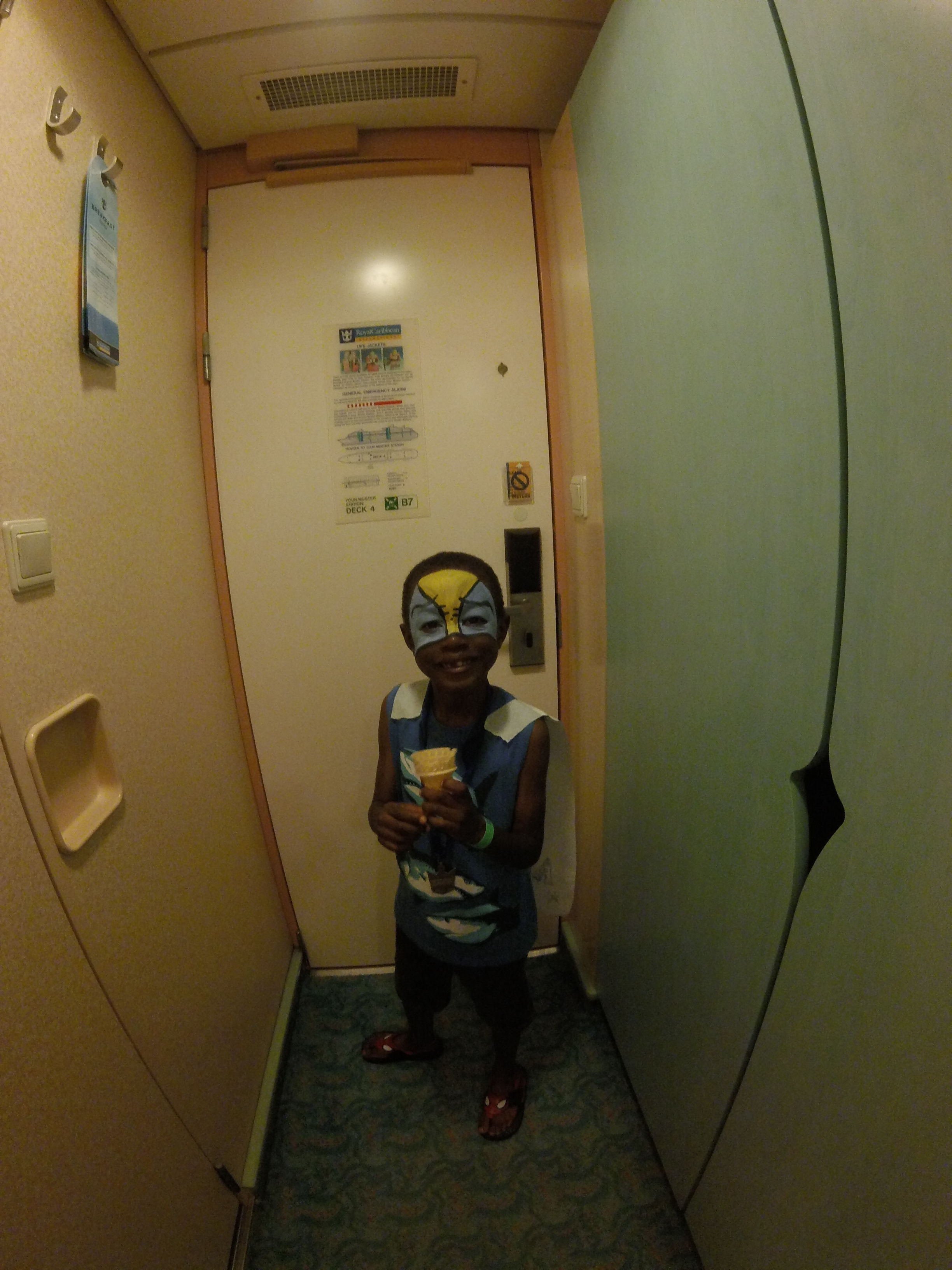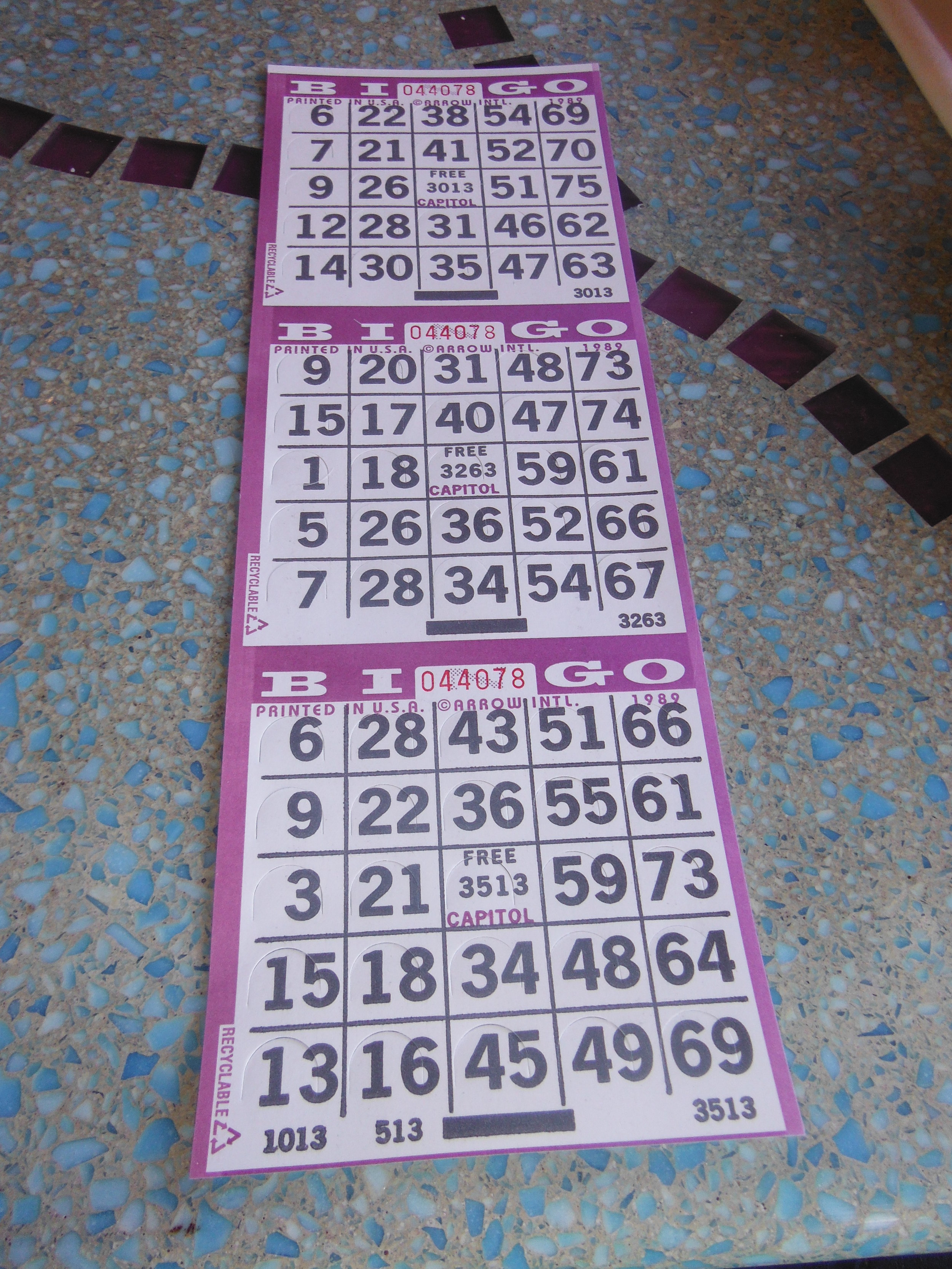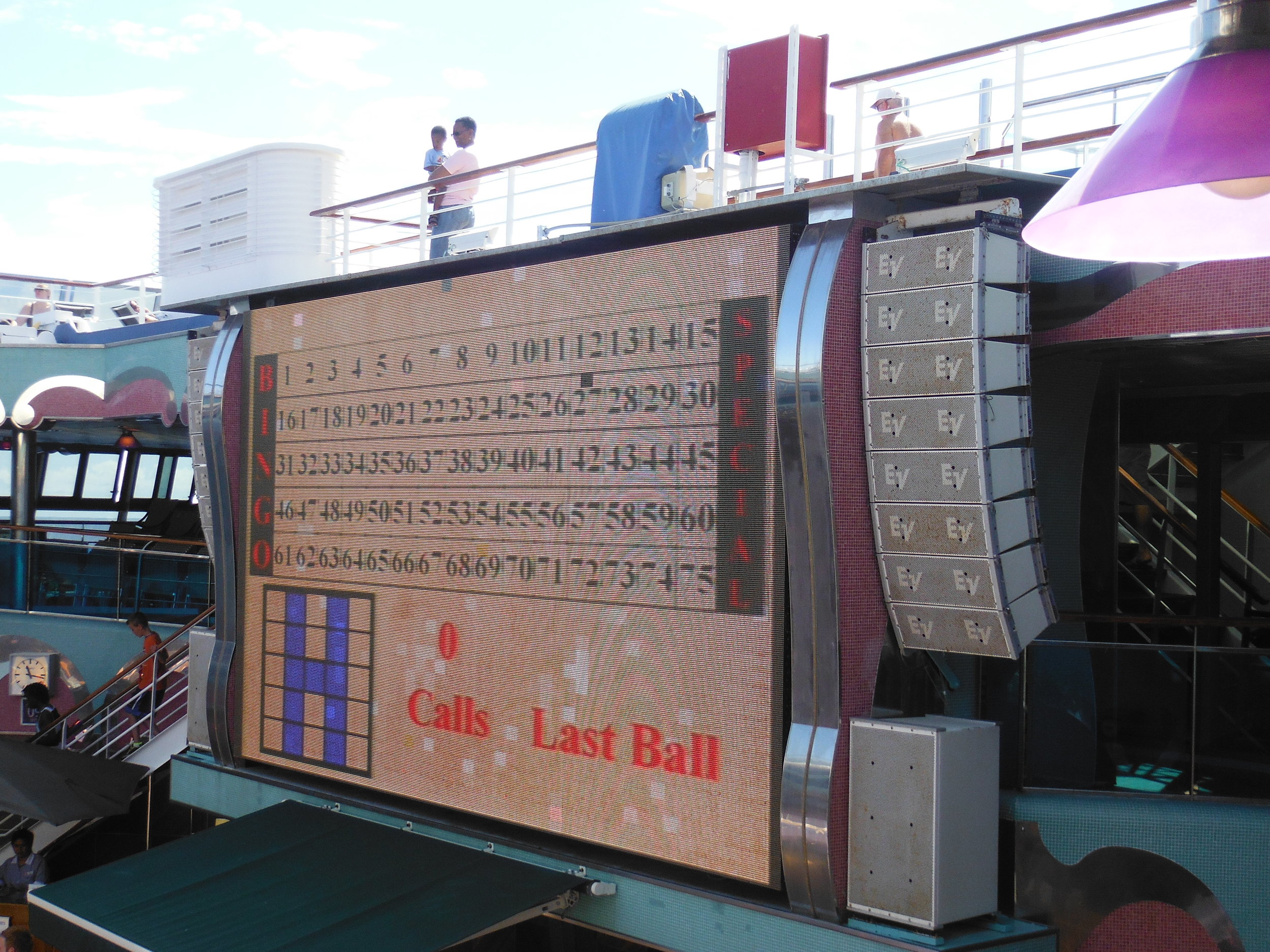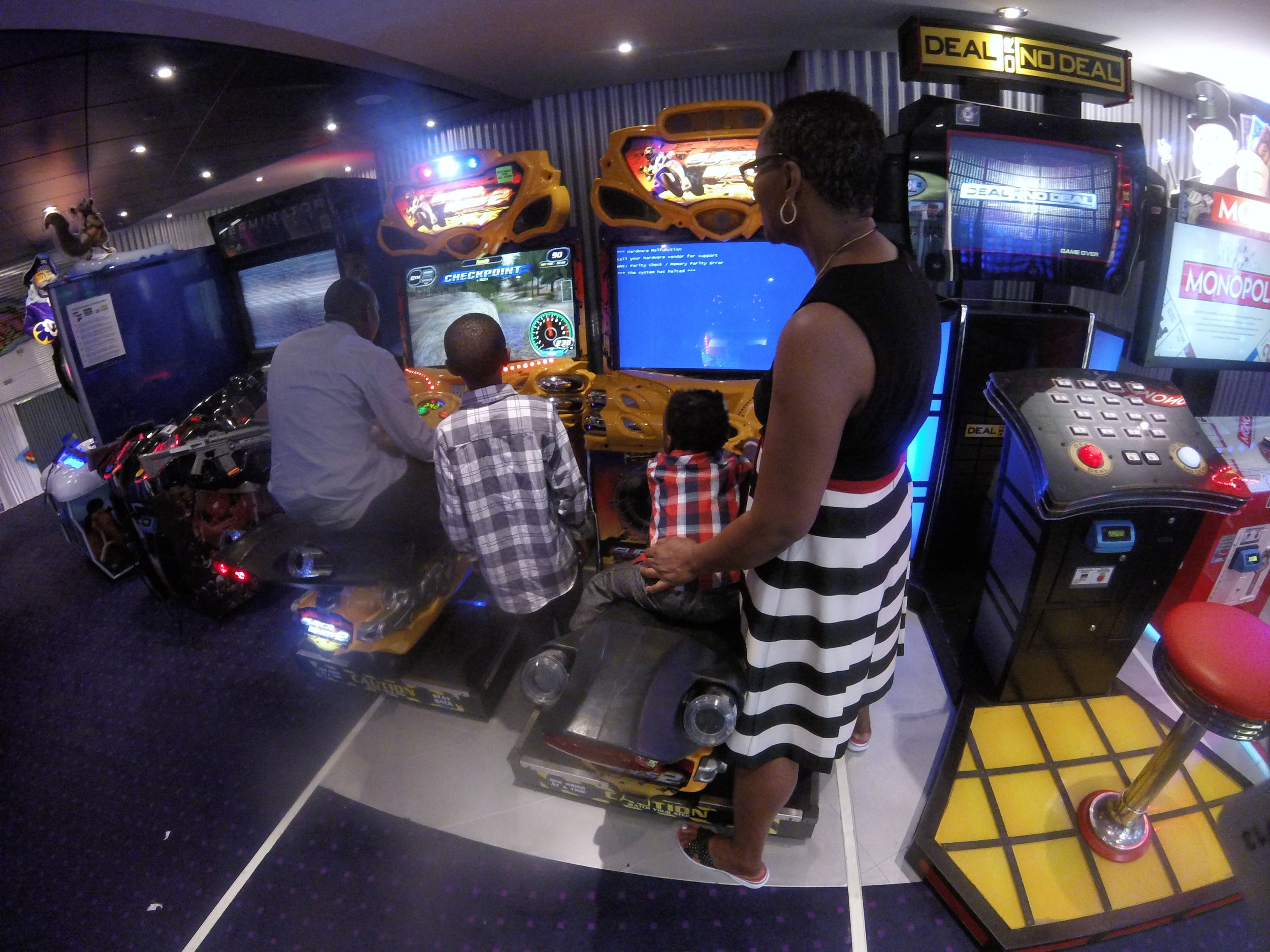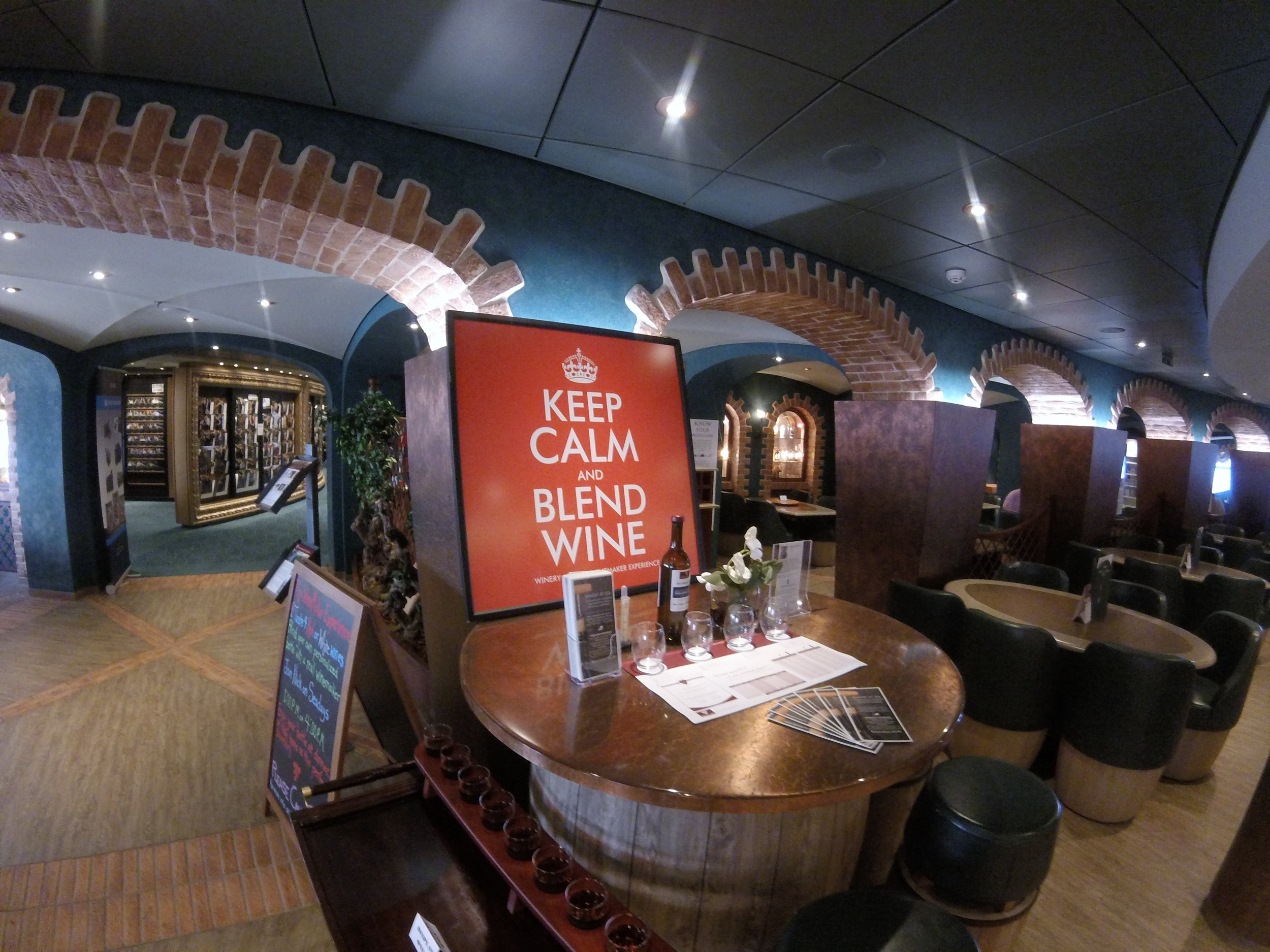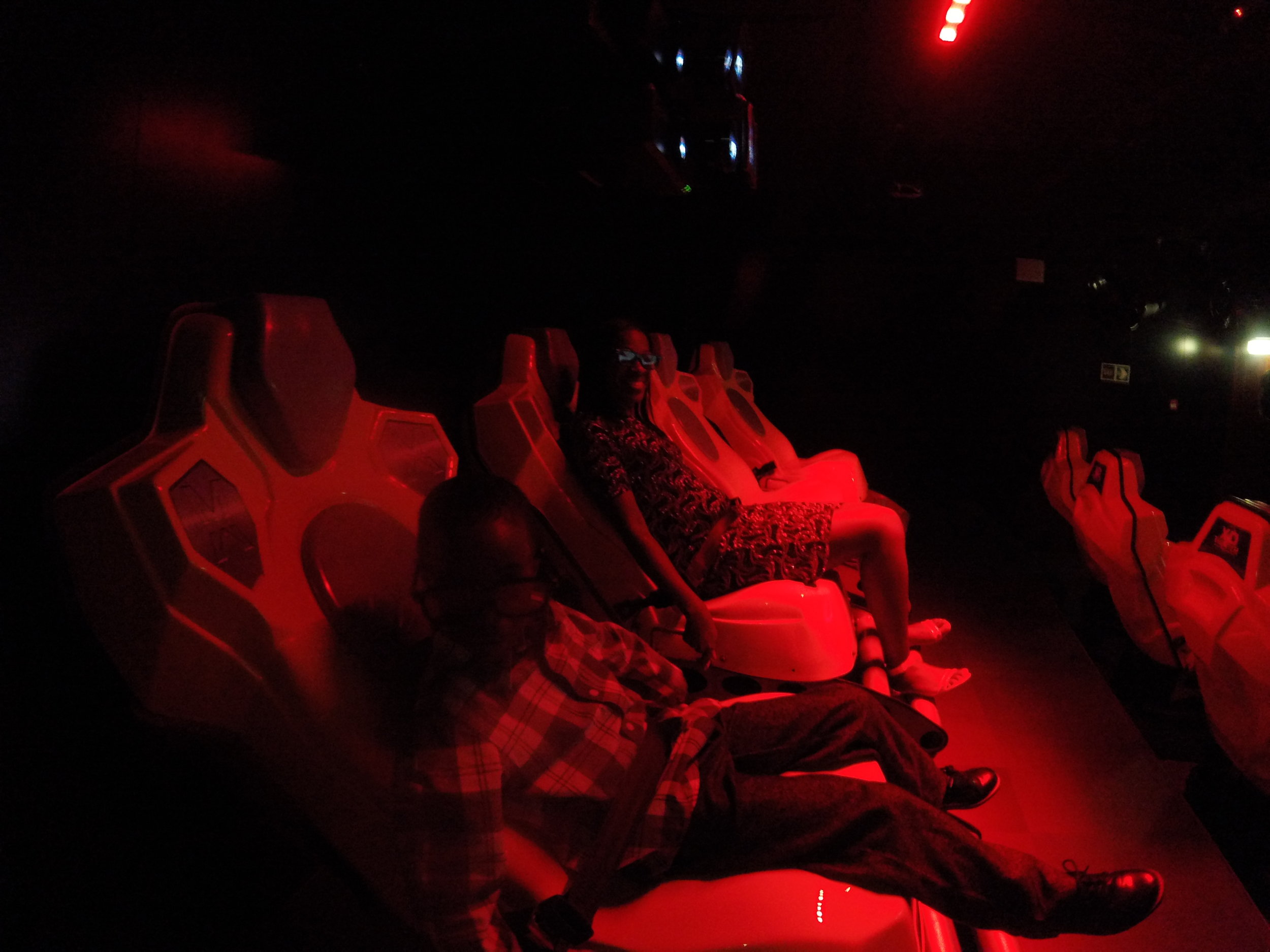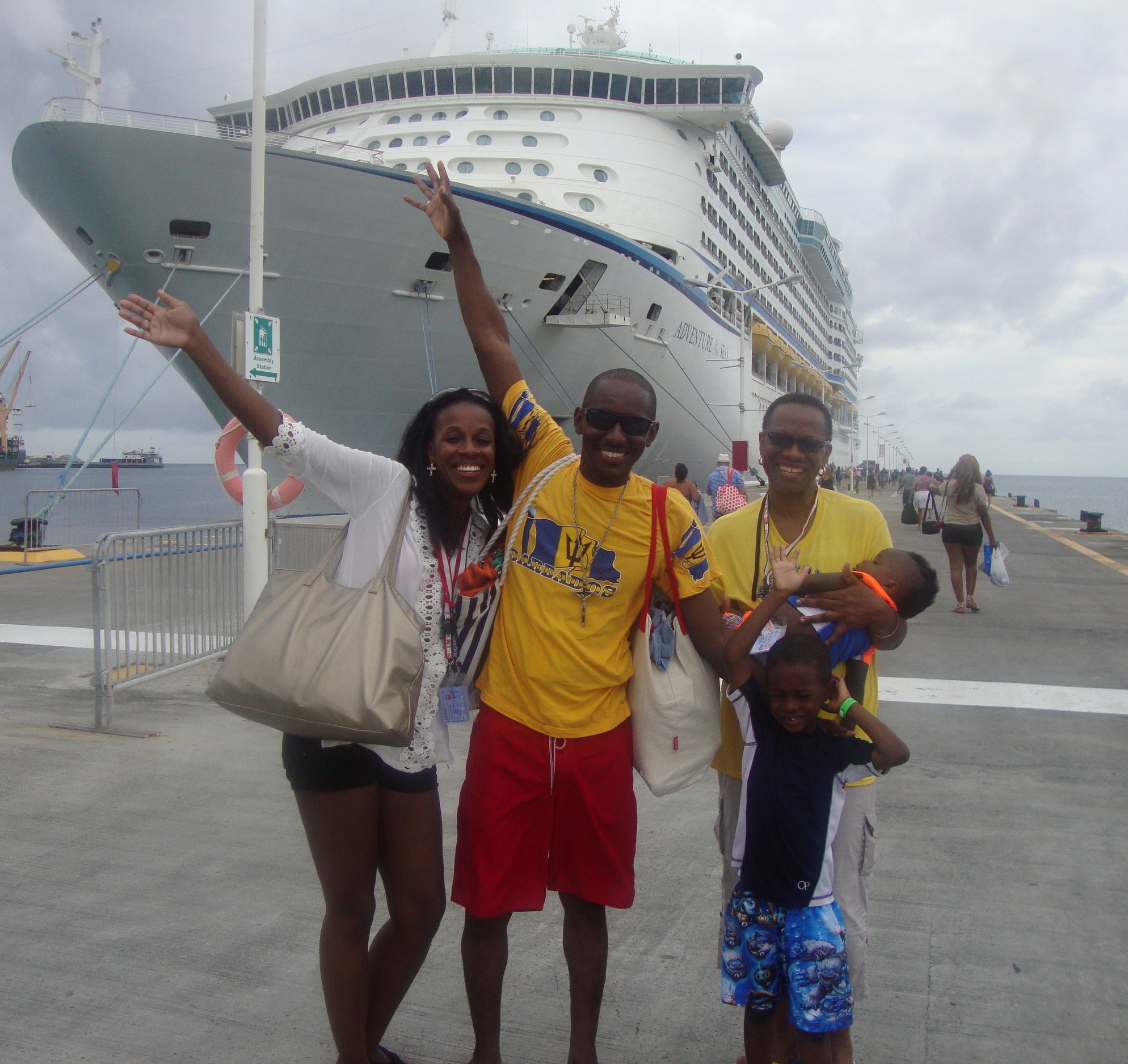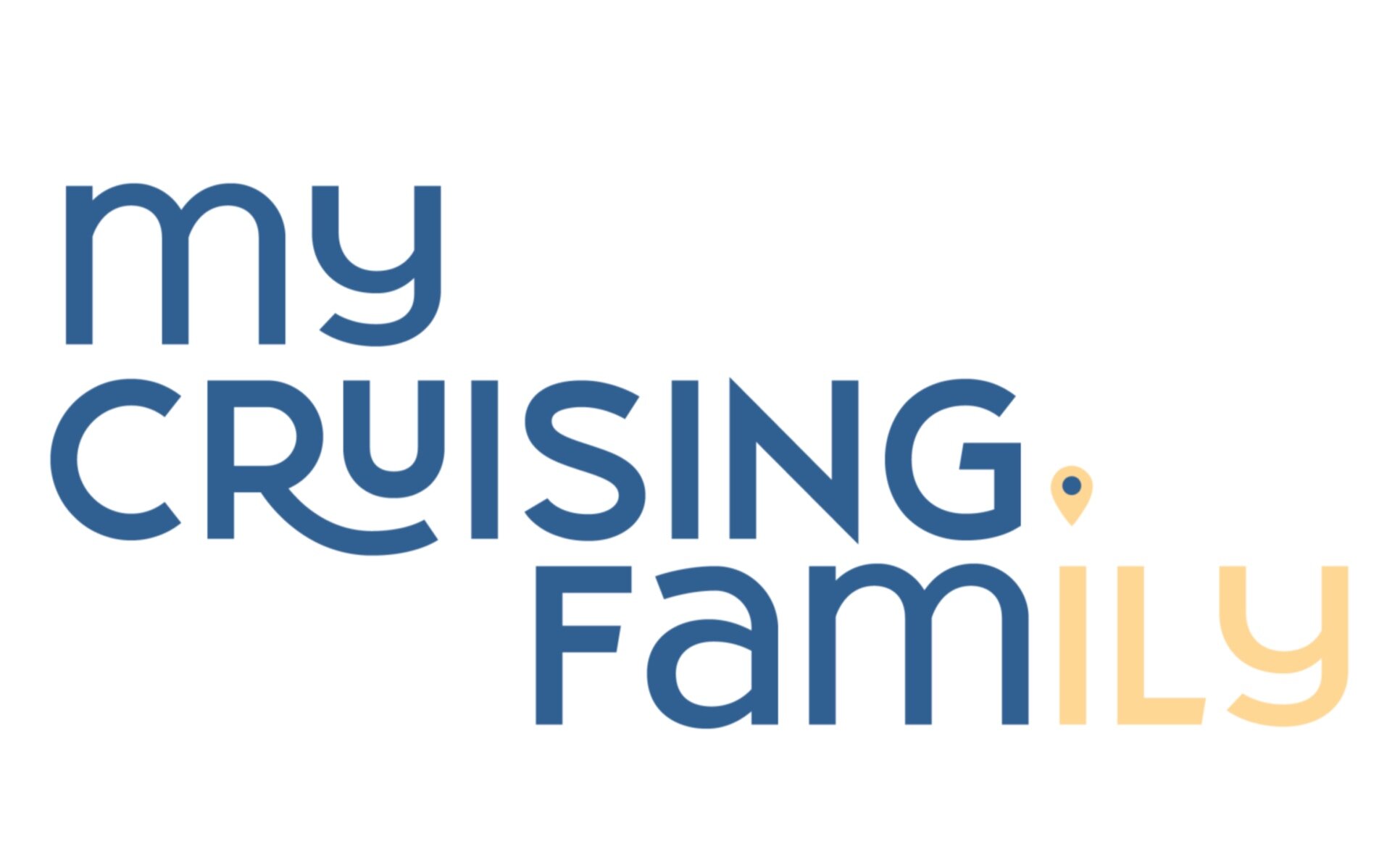Myth vs. Truth: What Will You Believe?
We've probably all heard one or more of the following seven cruise myths, and unfortunately, such myths have kept some folks away from a spectacular vacation. I am writing today to shed some light on a number of negative things that have been said about cruising. Let's spread some truth, debunk some myths, and hopefully inspire someone to explore the awesome world of cruising!
Myth #1:
If I cruise, I’ll get sick.
Truth:
If you stay on land, you may get sick. If you fly elsewhere, you may get sick. Why is there such a fear of sickness with regard to cruising? While we have heard of people having norovirus on cruise ships, that is not the most common setting for reported norovirus. One reason that we hear so much about norovirus on cruise ships is that sicknesses on cruise ships are tracked while that is not always the case with sicknesses on land. According to the Center for Disease Control (CDC) website, the most commonly reported settings for norovirus outbreaks in the United States and other industrialized countries are health care facilities, including nursing homes, and hospitals. Surely that shouldn’t stop someone from seeking medical care. Norovirus has also occurred in child care centers, schools, and colleges, but surely that shouldn’t stop someone from seeking to attend school or college. Therefore, that fear should not stop a person or a family from having a wonderful cruise vacation.
As with being on land, the best prevention from illness is keeping hands as clean as possible through frequent and thorough hand-washing. If soap and water isn’t readily available, then hand sanitizer may suffice until soap and water is available, at which point, soap and water should be used to clean one’s hands. It is also a good idea to take vitamins containing probiotics regularly before and during your cruise. Pack your medication, as well as medication for each family member traveling with you – including, but not limited to, prescribed medication, vitamins/probiotics, cold/flu medication, allergy medication, ibuprofen/acetaminophen, anti-nausea medicine, and topical medication and ointments. It I also a good idea, especially when traveling as a family with little ones, to schedule a doctor’s appointment prior to traveling, so that you can discuss with the doctor any concerns that you or your children may have. Of course, I also recommend purchasing travel insurance that includes medical coverage. You can read more about why we purchase travel insurance, here. It should be noted that the situation in the linked blog post is a testament to the fact that people can get sick on land or at sea.
If your concern is seasickness, then there are certain precautions that you can take, including booking a mid-ship room or a room as close to mid-ship as possible. Also, ginger candies, ginger tea, acupressure bracelets, over-the-counter pills, as well as prescription pills and patches, are all measures that can be taken, starting prior to your cruise, and of course, should be taken only as directed by the manufacturer and/or your doctor.
Myth #2:
Cruise ships are too crowded.
Truth:
Yes, there are ships that can accommodate over 6000 people; however those ships are also the largest at sea, weighing over 225,000 gross tons, and measuring 1188 feet in length. Therefore, guests do not at all feel as though these ships are crowded. Royal Caribbean’s Oasis Class ships, currently the largest at sea, are well-known for their multiple neighborhoods onboard the ship, including Central Park, and the Boardwalk, which indicates that the ship is quite enormous. Guests who have sailed on Oasis Class ships have consistently indicated in their cruise reviews that the ships are excellently designed to allow for the smooth flow of guests throughout. While older ships may have received some reviews about crowded theaters and buffets, the cruise industry’s newest ships, of which there are many, boast a variety of public areas, including entertainment venues, lounges, bars, restaurants, and pool deck seating areas designed to accommodate each ship’s guests, and to enhance traffic flow.
Myth #3:
Cruising is for old people only; young people will be bored.
Truth:
Bumper cars, simulated sky diving, XD/4D theaters, F1 simulators, ropes courses, sky rides, water slides, video games, and arcades are found among various cruise lines, including, but not limited to Royal Caribbean Cruises, Mediterranean Shipping Company (MSC) Cruises, Carnival Cruise Lines, Norwegian Cruise Lines, and Disney Cruise Lines. These and many other cruise lines also boast robust children’s programs, usually for children ages 3 and above, with some offering services for infants as well. Some cruise lines offer enhanced experiences for younger guests, such as DreamWorks characters on Royal Caribbean ships and, of course, Disney characters on Disney Cruise Line. That all being said, cruising is an amazing vacation option for the entire family. With most ships offering a spa, an art gallery, art auctions, as well as trivia, bingo, lounges with a variety of music options, and a casino, the more mature guests can enjoy the very same cruise as their younger family members. Grandparents, parents, and children can look forward to sailing together because the newest ships – and even some older ones – are designed to cater to all age groups.
Tip: Shorter, more affordable, cruises – 7 days or less – tend to attract younger cruisers, who may be in school, or may be newly employed, and therefore, may not have the luxury of taking longer, more expensive, cruise vacations.
Myth #4:
Modern-day cruise ships are like amusement parks; people who want a quiet and relaxing vacation will be disappointed.
Truth:
As I stated above, grandparents, parents, and children can look forward to sailing together because the newest ships – and even some older ones – are designed to cater to all age groups. Some ships, including all Disney Cruise Line ships, believe it or not, feature tranquil adult-only areas. As stated above, most ships offer a spa, an art gallery, art auctions, as well as trivia, bingo, lounges with a variety of music options, and a casino, so the more mature guests can enjoy the very same cruise as their younger family members. While, yes, there are bumper cars, water slides, video games, and arcades, those amenities are not usually next door to the spa or art gallery. Ship designers are very thoughtful about their work, and the results are well-designed ships that can accommodate and appeal to the multi-generational family.
Tip: Longer cruises – 14 days or more – tend to attract older cruisers, who may be retired or otherwise have more flexibility in their schedules to cruise for long periods of time; so, guests may find a more relaxed atmosphere on such cruises.
Myth #5:
Cruises don’t allow guests to learn much about a country or culture because cruise ships are usually in port only for a day or two.
Truth:
You can learn a tremendous amount about the various ports of call if you choose to do so. I like to say that cruising allows me to taste each port, and to get a feel to decide whether I would like to plan a land vacation to a particular port to delve more deeply into the culture. However, even in my cruising to various ports, I seek to learn about the country and the people who live and work there. My family and I love speaking with our drivers, tour guides, bartenders, wait staff, store attendants, and others to learn more about them, their country, and their culture.
You can read more about my position on people-to-people travel, here.
Some cruise lines, like Celestyal Cruises, which is well-known for its Cuban cultural immersion cruises, offer shore excursions included in the cruise fare, and onboard cultural lessons to its guests. Even the cruise lines that do not include the cost of excursions in the cruise fare, provide some very culturally-rich excursions that can be purchased at an additional cost. My family and I can turn simple beach excursions into cultural exchanges, as we enjoy speaking with our drivers and tour guides on the way to the beach, and even vendors at the beach, about the countries that we visit. I encourage cruisers to research the locations to which they are traveling by using guidebooks, and the internet, of course. I like to conduct travel research on TripAdvisor (www.TripAdvisor.com), as I read through suggestions and reviews of what excursions and tours are available in each port of call. There is an opportunity for cultural immersion and growth through many of the excursions or tours offered independently. TripAdvisor often includes the tour provider’s website, so there may be instances in which you can book directly with the tour provider, via internet, and the tour company will be ready for your arrival in port. While I know that some cruise lines and travelers have emphasized that a perk about using a ship’s excursion is that the ship will not sail away without you, I will emphasize that most of the tour companies that conduct shore excursions depend on the cruise industry for their business, so they tend to be very diligent about picking guests up and dropping guests off at the port with enough time prior to the ship’s departure. That being said, guests are responsible for knowing what time they need to return to their cruise ship, and for getting there on time.
Myth #6:
Cruises are for rich people only.
Truth:
The thought that cruising is for rich people only is simply not true. With costs as low as $50 per night, per person, for a 4-night cruise, I think it’s fair to say that there is a cruise for every budget. That being said, it is highly recommended that you budget for your cruise – set aside finances to go towards your cruise as you would for other expenses. If you think that you don’t have the money to set aside for a cruise, then I suggest looking at your current spending and figuring out whether there is any area in which you can cut back on spending – even if only for a few months each year – so that you can set aside money for your cruise. Some areas in which my family has cut spending include entertainment, eating out, and spending on clothes and shoes.
When preparing financially for a cruise, it is important to include more than the cruise fare and taxes in your cruise budget; you should also include the following:
- Cost of transportation to and from your cruise (which means considering whether you will drive, take a taxicab, fly, or take the train to the ship’s homeport or port of embarkation);
- Cost of pre-cruise and/or post-cruise accommodations (which means considering whether you will need a hotel prior to setting sail, or after your ship returns);
- Gratuities for the crew members (which, in many cases, will automatically be added to your invoice by the end of the cruise, and is usually between $13 and $14 per day, per guest, and guests are allowed to provide additional gratuity for exceptional service);
- Cost of drink packages or drink vouchers, as many cruise lines do not include sodas and alcoholic beverages in the cruise fare;
- Spending in port on shore excursions (some may or may not include transportation and meals and drinks in your ports of call, so if not included, then those costs must be considered as well), gifts and souvenirs;
- Travel insurance, which is highly recommended.
Myth #7:
Cruising with a family is difficult to do.
Truth:
The thought that cruising with a family is difficult to do will probably only last until you actually do it. We repeatedly cruise with our family, and just like any other family outing, it requires planning ahead. Researching the cruise lines, researching the ships and the ports, creating packing lists, and starting to plan and pack early are a few tips that can make the process flow more smoothly. Cruising with a family is fun, and in my opinion is one of the most family-friendly vacations because cruising caters to multiple generations.
Most cruise lines offer robust children’s programs, usually for children ages 3 and above, with some offering services for infants as well, so that the adults in the family can explore and enjoy the ship while the children enjoy cruising and spending time with others their age. Our suggestion is that families utilize the children’s program for just a portion of the day because, of course, a part of the reason we cruise as a family is to spend time together as a family – but there is a balance. Multi-generational families that are cruising together can take the opportunity to have grandparents spend time with their grandchildren while mom and dad have some alone time.
The younger family members can enjoy DreamWorks or Disney characters, waterslides, ropes courses, simulated sky diving, bumper cars, sky rides, XD/4D theaters, F1 simulators, video games, arcades, and more. The older family members can enjoy the spa, the art gallery, art auctions, trivia, bingo, lounges, a casino, and more. That all being said, there’s nothing stopping older family members from also enjoying bumper cars and video games, nor is there anything stopping younger family members from enjoying the art gallery and bingo. Cruising is truly an excellent option for a family vacation!
What have you heard about cruising?
Are there any cruise myths that you would like me to debunk for you?
Experienced Cruisers – Feel free to comment and add to this list of myth vs. truth.

